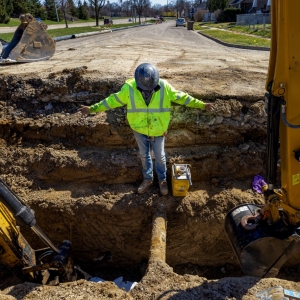 https://www.circleofblue.org/wp-content/uploads/2022/04/2022-04-14-Michigan-Waters-True-Cost-JGanter-1502-Edit-2500.jpg
912
1600
Brett Walton
https://www.circleofblue.org/wp-content/uploads/2018/06/Circle-of-Blue-Water-Speaks-600x139.png
Brett Walton2022-05-02 07:18:482022-12-09 10:52:35After Decades of Neglect, Bill Coming Due for Michigan’s Water Infrastructure
https://www.circleofblue.org/wp-content/uploads/2022/04/2022-04-14-Michigan-Waters-True-Cost-JGanter-1502-Edit-2500.jpg
912
1600
Brett Walton
https://www.circleofblue.org/wp-content/uploads/2018/06/Circle-of-Blue-Water-Speaks-600x139.png
Brett Walton2022-05-02 07:18:482022-12-09 10:52:35After Decades of Neglect, Bill Coming Due for Michigan’s Water InfrastructureSome Michigan Water Systems Are Overbuilt, Underfunded. Are Mergers The Answer?
Customers get cheaper, cleaner water when communities share the cost of infrastructure. But Michigan’s experience shows how political conflicts and logistical challenges can complicate the math.

Throughout the Great Lakes region and across the U.S., water systems are aging. In some communities, this means water bills that residents can’t afford or water that’s unsafe to drink. It means that vulnerable systems are even more at risk in a changing climate. From shrinking cities and small towns to the comparatively thriving suburbs, the true cost of water has been deferred for decades.
As the nation prepares to pour hundreds of billions of federal dollars into rescuing water systems, the Great Lakes News Collaborative investigates the true cost of water in Michigan.
This is part eight of a ten-part series.
Kelly House, Bridge Michigan – May 11, 2022
PORT HURON—A behemoth along the Saint Clair River, the Port Huron water filtration plant is capable of purifying 30 million gallons a day — enough to serve the entire population of St. Clair County, and then some.
But for lack of demand, it operates at about a quarter of its capacity on a good day, while neighboring Marysville runs its own oversized plant six miles downstream.
Six miles further south is St. Clair’s plant. And a few miles south of that, East China’s.
All told, the six riverside water treatment facilities in this Canadian border county north of metro Detroit can produce enough water to satisfy more than 300 percent of peak demand. Like living alone in a mansion on a blue collar salary, some of those hulking pieces of infrastructure have become absurd to own and impossible to maintain at current levels of ratepayer support.
The mismatch between capacity and demand is emblematic of a nationwide problem that’s particularly acute in the industrial Upper Midwest: Suburban sprawl, industry loss, water conservation and wishful thinking about future growth have created a crisis of overbuilt water infrastructure, driving up costs and, in some cases, threatening water quality as municipalities struggle to maintain old and unwieldy systems.
The St. Clair River Corridor is just one place where state regulators are pushing towns to consolidate water systems for greater efficiency as aging, costly plants near their expiration date.
Other examples include:
- Berrien County, where the combined capacity of three water plants within a few miles of each other could serve the region multiple times over;
- Ann Arbor, where state regulators want city officials to reconsider plans to rehabilitate the city’s treatment plant in favor of running a pipe to the nearest Great Lakes Water Authority (GLWA) main;
- Mount Clemens, where city officials are studying possible partnership with GLWA as the city’s 93-year-old water treatment plant nears its expiration date;
- And countless trailer parks, apartment complexes and subdivisions that operate their own drinking water systems a stone’s throw from the nearest municipal water main.
“We’ve gotta get out of this mindset in the state that water systems need to end at municipal boundaries,” said Eric Oswald, director of the drinking water and environmental health unit at the Michigan Department of Environment, Great Lakes and Energy (EGLE). “It doesn’t make a whole lot of sense for consumers.”
One drinking water policy expert said customers in systems serving at least 10,000 customers pay an average of $15 less on their water bills compared to customers in small systems.
But while partnerships often make sense on paper — customers realize economies of scale when communities share the cost of infrastructure — Michigan’s experience shows how political conflicts and logistical challenges can complicate the math.
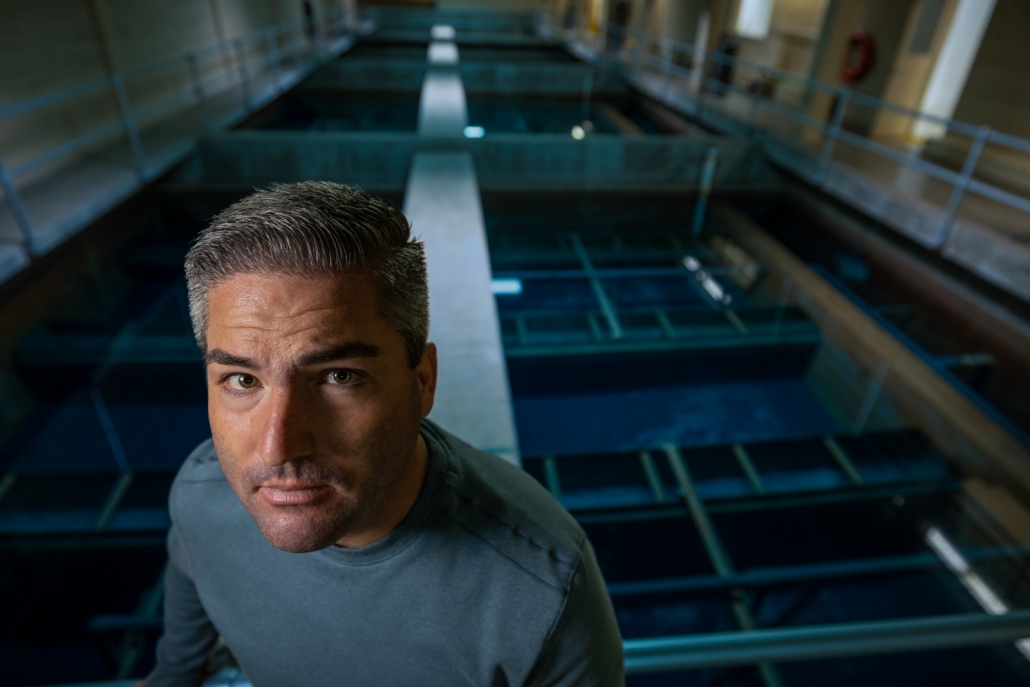
Port Huron City Manager James Freed feels frustration about the fact that while his city’s water plant has plenty of excess capacity to take on new users, neighboring Marysville has opted to reinvest millions in its water plant rather than joining Port Huron. (Photo by J. Carl Ganter / Circle of Blue)
Stagnant populations, expanding infrastructure
Built in the booming 1960s, Port Huron’s plant is a monument to the era’s unrealized visions of endless prosperity. It was constructed with plenty of extra space, under the assumption that the city’s population would keep growing.
“They projected that by right now, we would have 100,000 more people than we do,” said City Manager James Freed.
Instead, Port Huron’s population has declined 20 percent since 1960, to under 29,000 today. The surrounding suburbs ballooned over the same period, resulting in a 50 percent population increase county-wide. But rather than tapping into Port Huron’s plant, neighboring communities spent millions building, revamping and expanding their own plants.
Similar dynamics have played out across the state, making Michigan’s aging and stagnant population, which has hovered around 10 million for decades, responsible for maintaining a growing portfolio of treatment facilities, pipes, valves, water towers and the staff to maintain them.
Combine that with a manufacturing exodus in which water suppliers lost big industrial accounts that will likely never return, and increased efficiency that lowered the average American’s household water use by 20 percent since 1990, and water suppliers are sitting on massive temples of water purification with little demand.
And those temples cost plenty in maintenance work, from replacing valves and upgrading treatment techniques as drinking water standards evolve, to re-roofing buildings and swapping out old pipes before they burst.
“It’s stranded capital,” said Manny Teodoro, an associate professor of public affairs at the University of Wisconsin-Madison, who studies water policy. “You put it all together and simple division tells you you’re going to have higher water costs.”
St. Clair County Commission Chair Jeff Bohm, a Republican who is vice president of the local Economic Development Alliance, said he believes the region’s future is contingent upon reversing those trends.
Within an hour’s drive of Detroit and rural enough to contain the undeveloped multi-hectare tracts automakers need for massive electric vehicle manufacturing facilities, Bohm sees St. Clair County as primed to capitalize on Michigan’s coming economic shifts.
But you can’t attract investment when your region’s infrastructure isn’t ready to support development. And in southern St. Clair County, some water systems are in questionable condition.
Bohm said he has passed up opportunities to vie for large industrial projects because the region’s infrastructure wasn’t ready to accommodate them.
“That pains me,” he said.
The county has commissioned a report, due next year, that will analyze how southern St. Clair County can seize future development. How to deliver water to those anticipated plants will be a key focus — one Bohm believes could prompt serious talk of partnership among the area’s hodgepodge of water systems.
Conversations have yet to begin. But as communities struggle to come up with the cash to maintain aging and unwieldy water systems, Bohm sees few alternatives.
Keeping existing systems separate “will cost a fortune,” Bohm said. “And then it’s the customer, the residents, who shoulder the burden.”
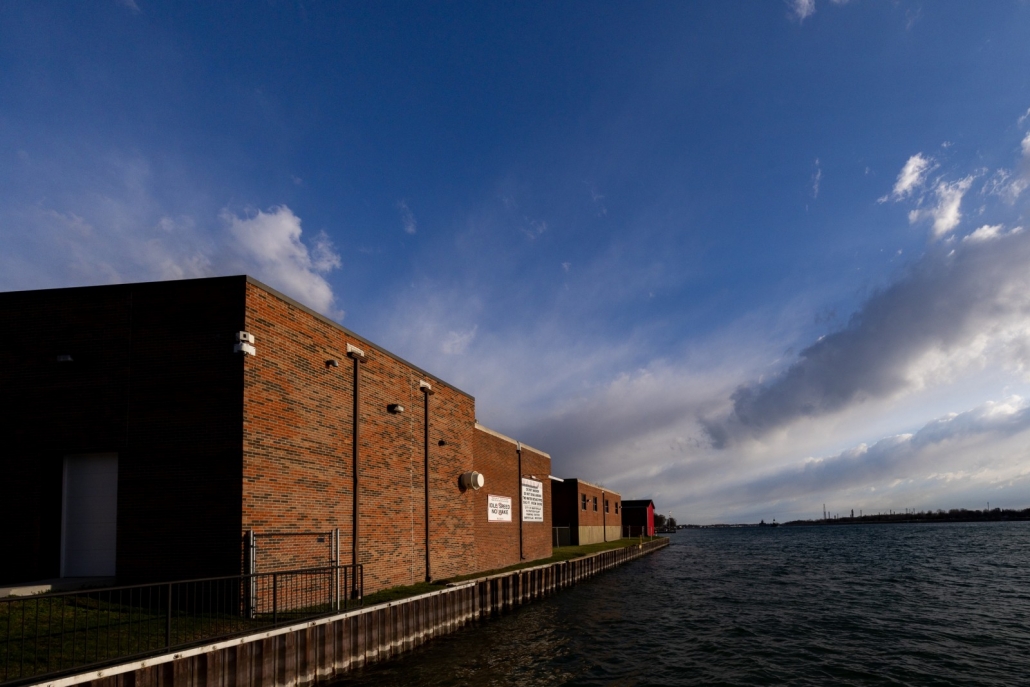
The Port Huron water treatment plant is capable of delivering 30 million gallons of water daily. But it operates at just a fraction of capacity, a result of population loss and increased water efficiency in recent decades. Photo by J. Carl Ganter / Circle of Blue
‘We need it yesterday’
There are more than 51,000 community water systems in the U.S., and nearly 1,400 in Michigan. The United Kingdom, by comparison, has just 32 serving a population of more than 70 million people.
Water experts and government regulators are increasingly pushing for consolidation as many Michigan water treatment facilities age beyond their intended lifespan, forcing decisions about whether to spend millions on a rebuild. Even small steps, such as sharing administrative staff, can help lower costs and improve water quality, said Teodoro of the University of Wisconsin.
“We need consolidation of the water sector in the United States, and we need it yesterday,” Teodoro said. But at the current rate, “we’ll probably get where we need to be in about 500 years.”
Using data from Wisconsin — the only state with readily-available data about water systems’ physical and financial health — Teodoro’s preliminary research has identified a sweet spot of about 20,000 customer connections for a given water system.
At that scale, he said, systems spend less per-customer on operations and maintenance, which frees money to hire qualified staff and invest in repairs and upgrades. Customers enjoy cleaner water and lower bills.
In Wisconsin, Teodoro found, average monthly bills for customers using 6,000 gallons of water were markedly lower for customers in larger systems. Customers of the smallest systems, those serving fewer than 100 residential customers, paid about $44 a month. That dropped to about $29 monthly for systems with 10,000 customer connections.
Safe Drinking Water Act violations also declined as system size grew. Between 2016 and 2020, systems with 1,000 customer connections were nearly twice as likely to violate health-related standards than those with 25,000 connections.
A similar analysis is not possible in Michigan because the state lacks a central repository of information about system size, water production and rates. Michigan regulators also lack almost any authority to oversee water systems’ financial health.
Then-Gov. Rick Snyder’s 21st Century Infrastructure Commission in 2016 concluded that Michigan needed new state policies to “require self-sufficient transparent operation” of water utilities.
To that end, EGLE in 2018 began requiring water providers to file plans detailing how they’ll pay to maintain their systems over time. But Oswald said regulators remain largely powerless to force fixes unless a system’s financial problems threaten public health. Instead, they point out red flags and try to encourage (rather than compel) solutions such as rate increases or consolidation.
The state has repeatedly done so in St. Clair County.
EGLE had harsh advice for Marine City’s treatment plan in a 2018 letter:
The city’s then-82-year-old plant was falling into disarray, EGLE’s letter noted, and “current operational and maintenance needs may overwhelm the available budget and resources.” City leaders, the state wrote, should consider partnering with neighbors to establish a regional water system.
EGLE inspectors came to a similar conclusion in neighboring St. Clair in August 2021.
“The City has not demonstrated the technical, managerial, and financial (TMF) capacity necessary to own and operate a water system,” EGLE wrote, and it was unclear how St. Clair would cover $18.6 million in looming costs.
Again, EGLE recommended partnering with neighboring systems to provide water.
So far, no serious talks of regionalizing the water system have begun, though the economic report due next year could be a first step.
In St. Clair, officials hope to upgrade and expand their water plant, adding capacity to process another million-gallons daily in anticipation of residential and industrial growth.
Holly Tatman, city manager for Marine City, said officials there don’t envision closing their plant either.
“Probably, the cost would outweigh the benefit,” Tatman said.
Other plants might need to expand or renovate to absorb a neighbor. And many communities take pride in having their own facilities.
“And I think you’d be hard-pressed to get a community to take theirs offline,” Tatman said, “because there is that peace of mind in knowing that you have it if you need it.”
Instead, Marine City leaders hope to put their plant to better use by providing water to outlying areas.
“Let’s utilize, to the full extent, the infrastructure that we already have here,” Tatman said.
Regulators have made similar pleas in Benton Harbor, where inspections last fall revealed a range of water system deficiencies that will take millions of dollars to fix, and Mount Clemens, where state inspectors warned in Feb. 2020 that the 91-year-old water plant is “nearing the end of its useful life,” plagued by corroding parts and malfunctioning equipment.
Benton Harbor Mayor Marcus Muhammad has been critical of the consolidation concept, wary of losing local control and convinced the city needs the plant for its revenue-generating potential and to support future growth in a city whose population peaked at nearly 19,000 residents in the 1950s. According to 2020 census figures, Benton Harbor’s population is now 9,103 people.
In Mount Clemens, Mayor Laura Kropp sees little alternative to shutting the city water treatment plant and hooking up to the Great Lakes Water Authority. The facility is nearing the end of its useful life, and Kropp expects a rebuild to cost more than city ratepayers can afford.
Many residents balk at the notion of closing the plant and joining GLWA, she said, but “if somebody was holding a gun to my head today and said make a decision, how in the hell could I pick saddling my community with that debt?”
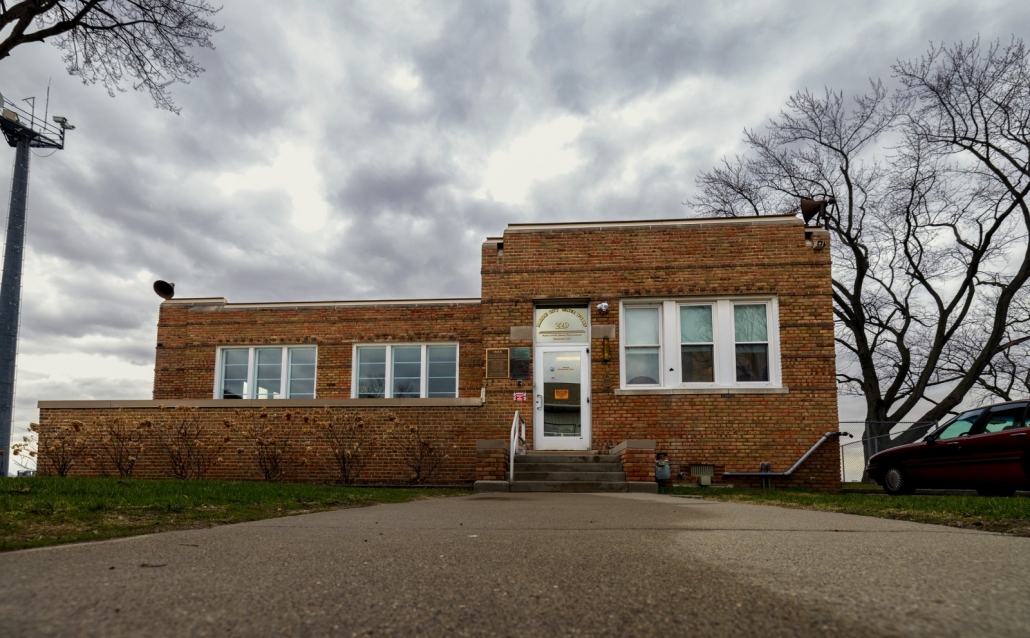
At Marine City’s water treatment plant, state regulators warned in 2018 that “current operational and maintenance needs may overwhelm the available budget and resources.” (Photo by J. Carl Ganter / Circle of Blue)
An unhappy marriage
Despite its widespread embrace among water experts and regulators, water system consolidation in Michigan and across the nation has proceeded slowly.
A report last year by the Environmental Policy Innovation Center found that the number of water utilities in the U.S. has declined by just .6 percent per year over the past 30 years.
An earlier report by the U.S. water alliance warned of city leaders’ tendency to make decisions with their individual community in mind, rather than the good of the region overall.
And in Michigan, past experience shows that forced marriages don’t always go smoothly.
Highland Park and the Great Lakes Water Authority are in the midst of a years-long dispute over water bills after state regulators in 2012 ordered the city to shut down its ailing water treatment plant citing water quality concerns, and directed GLWA to begin delivering water to Highland Park.
In February, GLWA approved a 3.7 percent wholesale rate increase for its customers — communities throughout southeast Michigan — blaming Highland Park’s $55 million in unpaid bills for nearly a third of the increase. Highland Park contends it’s GLWA that owes the city money.
The rate increase has triggered a revolt among the authority’s other customers, with several vowing to withhold payments to the authority and calling upon the state to step in.
“We have no opinion on Highland Park and whether or not they’ve paid the correct bills,” said Jordyn Sellek, executive director of the Conference of Western Wayne, which represents 18 Wayne County communities. “Our issue is with the fact that GLWA thinks they have the right to just charge all the other communities for another community’s debt.”
As all sides wait for a judge to clear up the billing dispute, Highland Park City Administrator Cathy Square said the city aims to get off GLWA water, fed up with water rates they believe are unfair.
“The whole purpose of regionalization is supposed to be cost effectiveness and economies of scale,” she said. “Now we have 10 years of data…and for Highland Park, regionalization is no good.”
City officials want to spend $30 million to revamp and reopen the shuttered plant. The debt service on a loan to do the job, Square said, “would be a fraction of what GLWA is charging us.”
State environmental regulators disagree.
“That would just be a disaster,” said Oswald of EGLE, noting that if Highland park could come up with money to revamp the plant, the shrinking city would still likely lack the ratepayer revenue to maintain it.
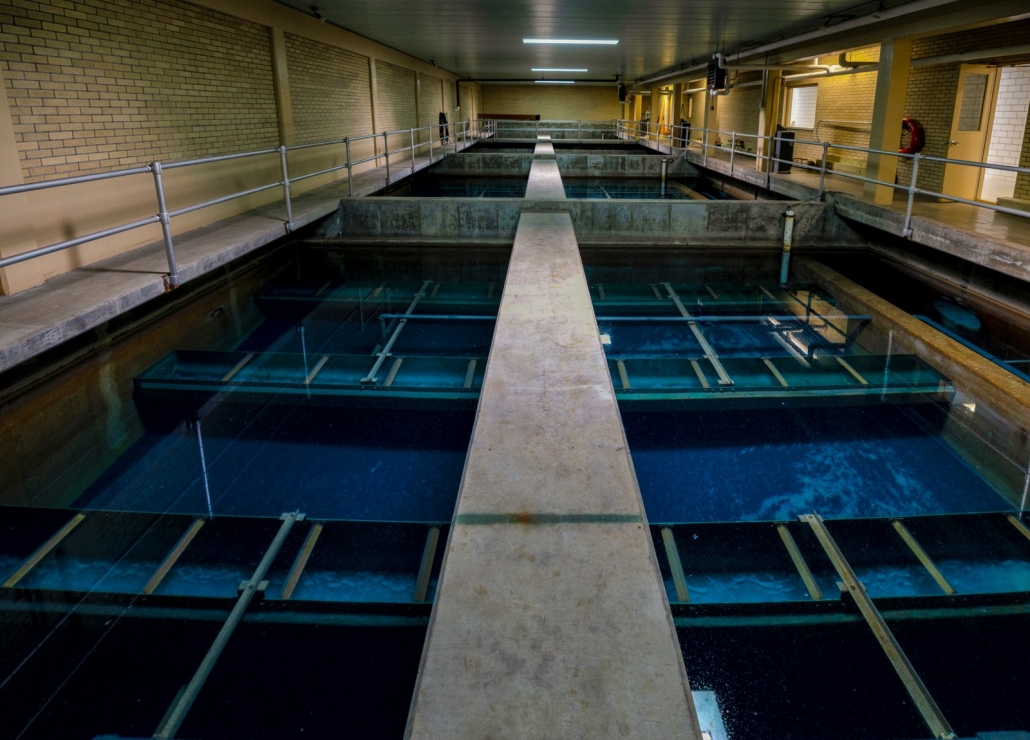
At Marine City’s water treatment plant, state regulators warned in 2018 that “current operational and maintenance needs may overwhelm the available budget and resources.” (Photo by J. Carl Ganter / Circle of Blue)
Water’s True Cost
The Great Lakes News Collaborative includes Bridge Michigan; Circle of Blue; Great Lakes Now at Detroit Public Television; and Michigan Radio, Michigan’s NPR News Leader; who work together to bring audiences news and information about the impact of climate change, pollution, and aging infrastructure on the Great Lakes and drinking water. This independent journalism is supported by the Charles Stewart Mott Foundation. Find all the work here.
Read the full series
 https://www.circleofblue.org/wp-content/uploads/2022/04/2022-04-14-Michigan-Waters-True-Cost-JGanter-1502-Edit-2500.jpg
912
1600
Brett Walton
https://www.circleofblue.org/wp-content/uploads/2018/06/Circle-of-Blue-Water-Speaks-600x139.png
Brett Walton2022-05-02 07:18:482022-12-09 10:52:35After Decades of Neglect, Bill Coming Due for Michigan’s Water Infrastructure
https://www.circleofblue.org/wp-content/uploads/2022/04/2022-04-14-Michigan-Waters-True-Cost-JGanter-1502-Edit-2500.jpg
912
1600
Brett Walton
https://www.circleofblue.org/wp-content/uploads/2018/06/Circle-of-Blue-Water-Speaks-600x139.png
Brett Walton2022-05-02 07:18:482022-12-09 10:52:35After Decades of Neglect, Bill Coming Due for Michigan’s Water Infrastructure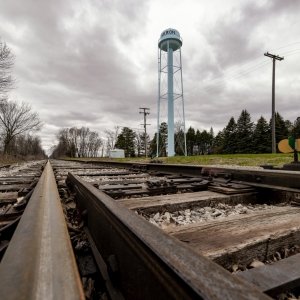
Many Rural Towns Have Neglected Drinking Water Systems for Decades

Water Woes Loom for Michigan Suburbs, Towns After Decades of Disinvestment
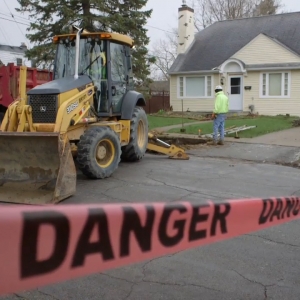
Michigan’s 20th Century Water Systems Too Big For Its Shrinking City Populations

Michigan’s Lack of Septic System Regulations is Causing Problems for Some of its Most Pristine Lakes
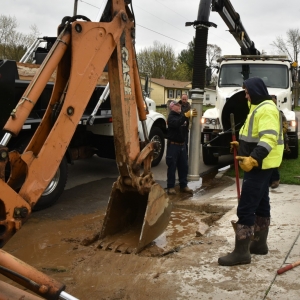
Short-Changing Michigan Local Governments Has Resulted in Deteriorating Water Systems and Other Services

High Cost of Water Hits Home
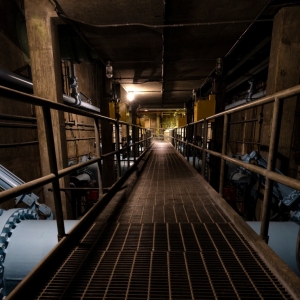
Michigan’s ‘Very Big Opportunity’ in Infrastructure Windfall
Related
© 2025 Circle of Blue – all rights reserved
Terms of Service | Privacy Policy



